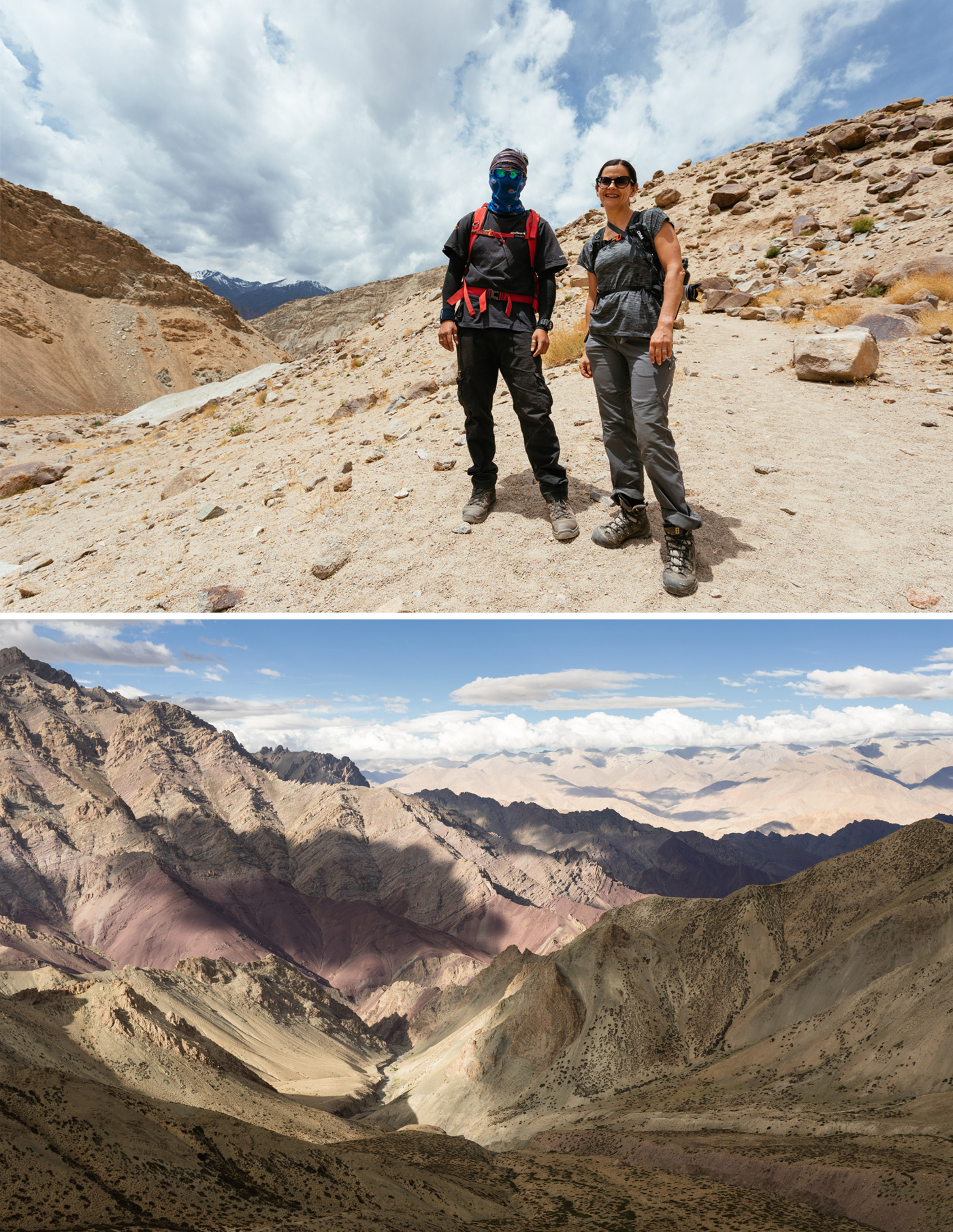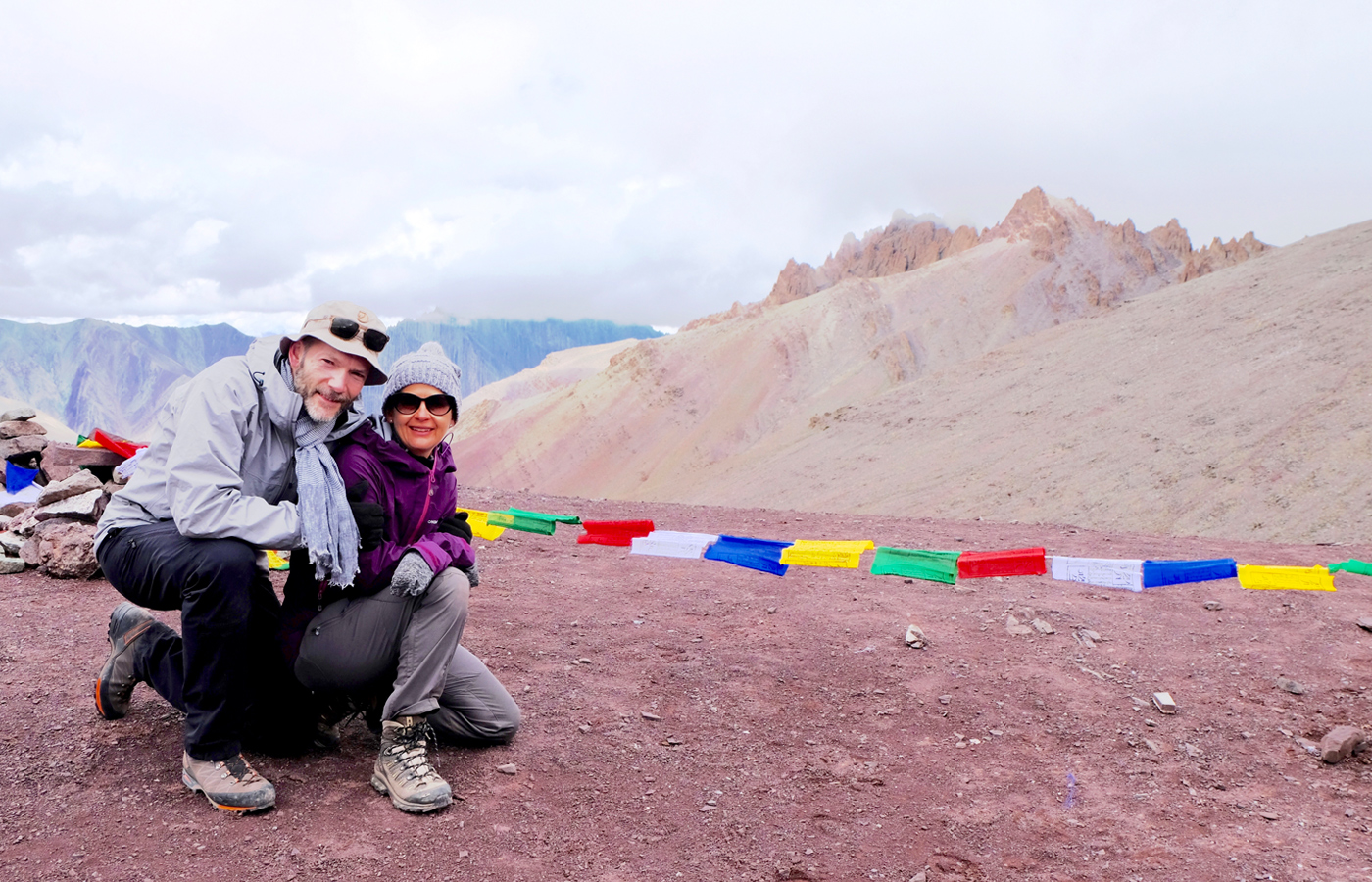As part of our two week trip to Ladakh, where we stayed in traditional village houses (read about our trip here), Julian and I included a four day trek in the Hemis High Altitude National Park. We traversed many mountain passes of the Zanskar Range, through an area without roads or permanent settlements away from the tourist path. We hiked for around 4 to 6 hours a day between comfortable mobile camps, ably guided by Bhim, who had been by our side throughout our time in Ladakh.
On the first day we left our cosy village house and set off. There were spectacular views at every turn of the path and we enjoyed the eerily quiet surroundings. Reaching our highest point of the day, the Chogdo Pass, we then descended through pastures passing herds of blue sheep (which aren’t actually blue) and dzos, a hybrid between a yak and a cow.
We arrived at camp and were rewarded with a gin and tonic and freshly made pakoras, before our three course dinner and then collapsing in to our dome tent snuggled up under quilts with hot water bottles.
The next morning, after been woken up with a pot of fresh coffee and homemade biscuits, followed by breakfast of fruit and masala omelettes, we broke camp early and set off with Bhim on the first stretch of our 16km hike. It was a solid 5km uphill slog, but we followed Bhim’s instructions: “slowly, slowly”, “make use of the mountain” and “respect nature, do not play with it”. With one last lung bursting surge, we reached the Shang La pass at 4,950m.
Taking a well-earned break and soaking in the stunning views, we were overtaken by our team (chef, porter, horsemen and their horses) who, having left the camp site an hour after us, were keeping good pace to ensure the next camp was set up for our arrival.
The next few hours were spent zig zagging the mountainside along narrow, vertigo inducing tracks and crossing frozen glacial streams.
Eventually we reached our second camp at Matho Pu, set on a grassy plateau and surrounded by shadowy jagged peaks.
After a good night’s sleep, our alarm call was the clanking of the bells around the necks of our horses, which were being brought down from the pasture where they spent the night.
Bhim set the pace as we climbed up and up on what seemed like a never ending ascent with only scuttling marmots to keep us company. Eventually the sight of fluttering prayer flags put smiles on our faces. We had reached the Matho La Pass, which just beat the previous day’s high at 4,963m, as indicated by Bhim’s Altitude App. Here we marked our achievement by adding our own prayer flags to those already tied at the top.
That night at camp, the clouds cleared for the first time on the trek and the stars came out in all their glory.
Our final day trekking was a walk in the park compared to the other days, as we strode along a river bed past cairns adorned with the skulls of Ladakhi Urial left in worship or memory of lost ones.
As we neared civilisation we got our first glimpse of other people. Herds of trekkers passed us in the opposite direction, at the start of their endeavour to climb Stok Kangrei which, at over 6,100m, is the highest peak in Ladakh. That wasn’t one we felt we needed to tick off. We were content having spent four days trekking through some of the most stunning scenery you cannot see from the valley floor, with just ourselves, Bhim and our camp team as company.
On the home stretch, in the distance down in the valley, we could see the end, Stok village.
Although our trek wasn’t technical, there were elements that were very lung punching due to the altitude and dry air, but what an experience in some of the most stunning scenery.
Due to its location on a high altitude plateau, the best months to travel to Ladakh are from May to September, when the rest of India is hit by the monsoons. Therefore it is a perfect place for a high end adventure during the school summer holidays.
If you are interested in visiting Ladakh, either just doing the village experience staying in wonderfully comfortable traditional houses or combining this with a trek, as we did, then please do get in touch. I am also happy to discuss trips to other parts of India, which is one of my favourite countries.
{Pictures: Julian and Lesley-Ann}













